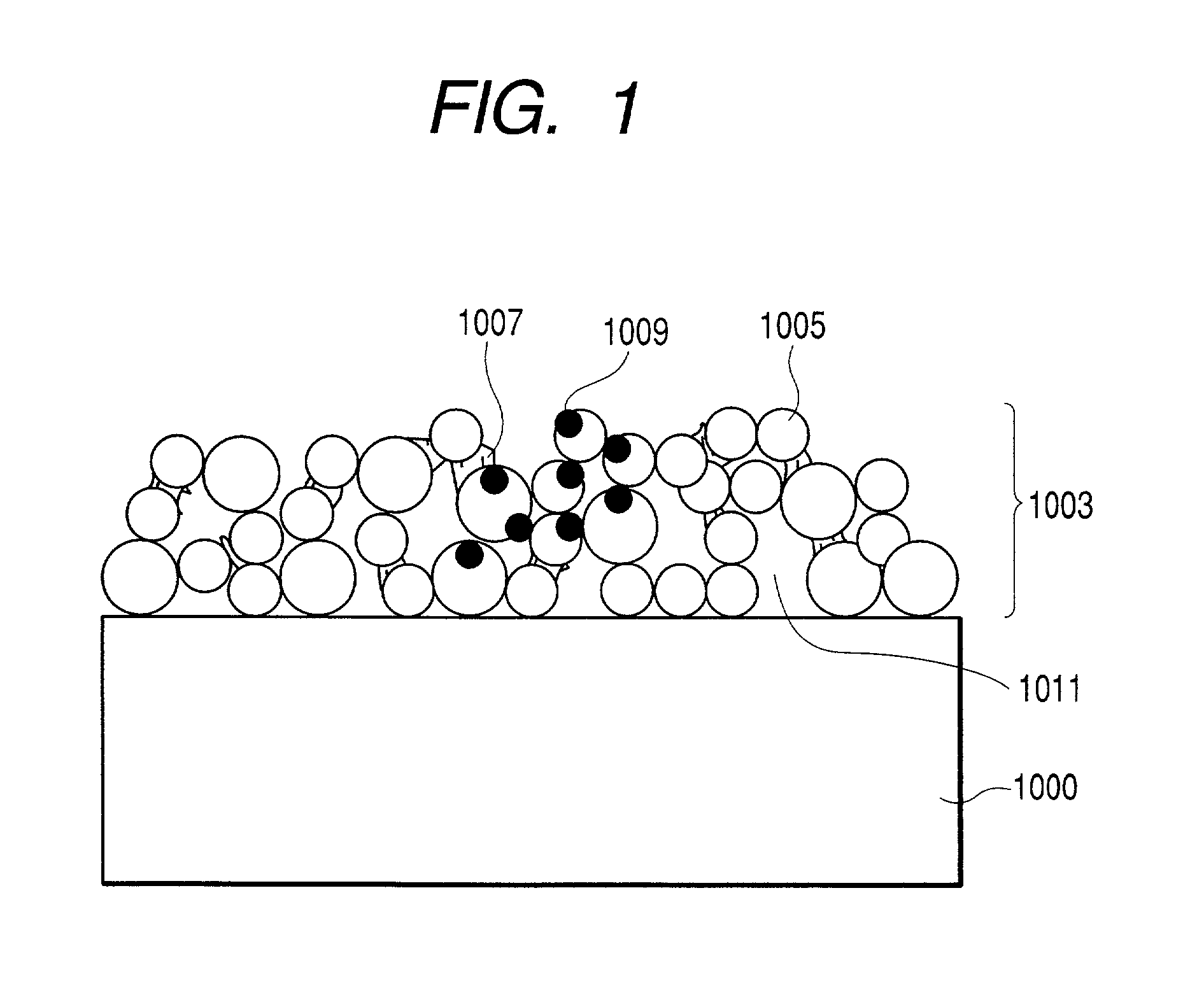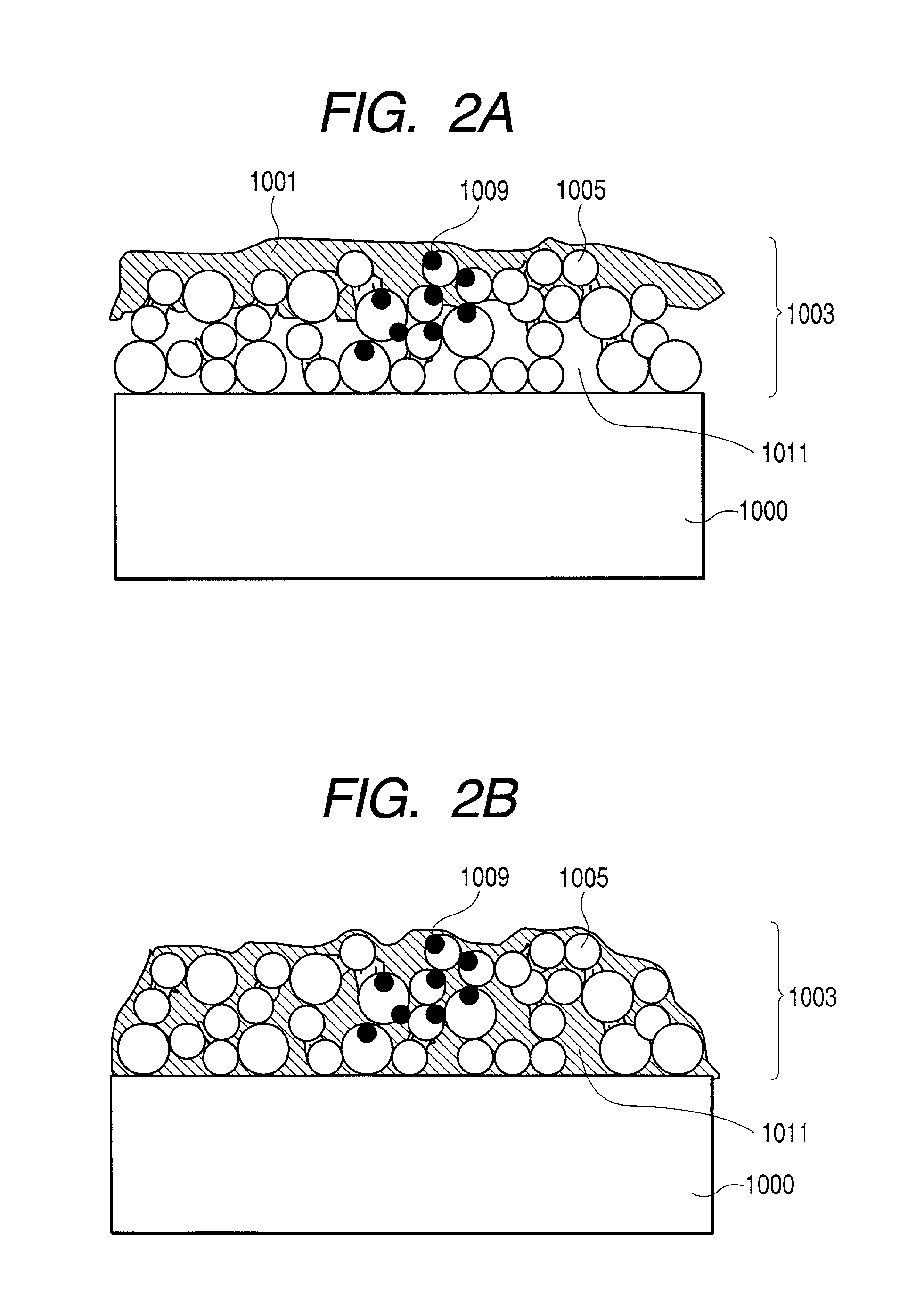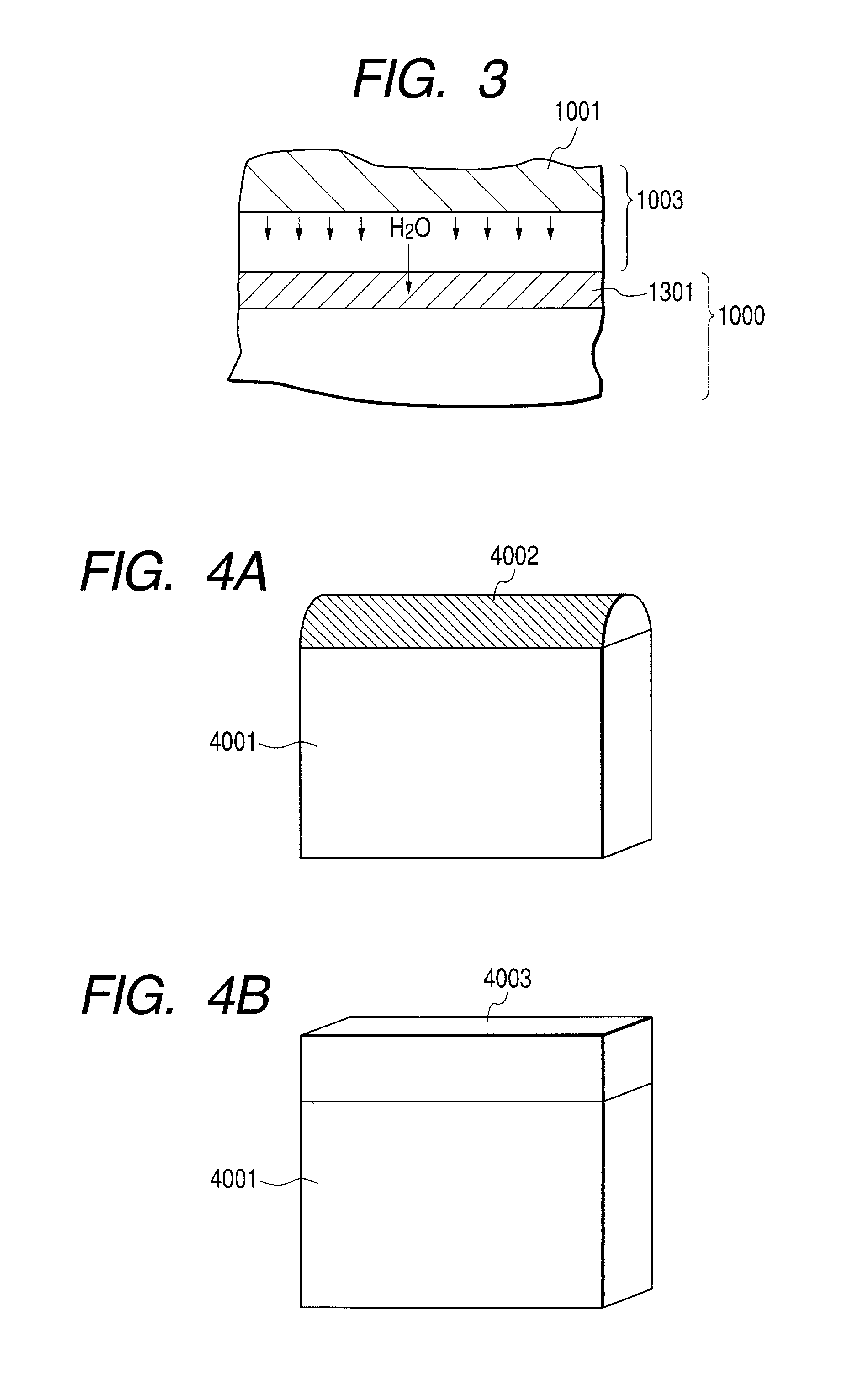Recorded matter, method of producing recorded matter, method for improving image fastness, image fastness-improving agent, image fastness improving kit, dispenser, and applicator
a recording method and image technology, applied in the field of recording matter, can solve the problems of lowering the clearness of the recorded image, still a problem to solve in the balance between image fastness and recording properties, and achieve the effect of more preferable recorded matter and easy penetration into the ink-receiving layer
- Summary
- Abstract
- Description
- Claims
- Application Information
AI Technical Summary
Benefits of technology
Problems solved by technology
Method used
Image
Examples
examples
[0107]The present invention will be further described with reference to Examples and Comparative Examples below.
example 12
[0162]Solid patches of composite black were formed on the recording medium by using an ink jet printer (commercial name: BJ-F870, made by Canon Inc.), with respective ink shot amounts of 100%, 80%, 60%, 40%, 20%, and 10%. Next, the solid patches of about O.D. 1.0 were selected and subjected to an exposure test in the same conditions as in the gas-fastness test III-1 except that the duration period was 672 hours, to observe the change in ΔE of each patch. For reference, the result of 504-hour exposure under this environment approximately corresponds to the result of standing in a common room in Tokyo for one year. As a control, print products by ordinary silver salt photography were subjected to the same exposure test to observe ΔE changes of the photographic image. Here, the silver salt photograph samples of composite black were prepared by the Fuji Film digital photography printing system (FDi) (Fuji Photographic Film K. K.), on a color photographic paper (commercial name: Ever Bea...
PUM
| Property | Measurement | Unit |
|---|---|---|
| temperature | aaaaa | aaaaa |
| diameter | aaaaa | aaaaa |
| carbon number | aaaaa | aaaaa |
Abstract
Description
Claims
Application Information
 Login to View More
Login to View More - R&D
- Intellectual Property
- Life Sciences
- Materials
- Tech Scout
- Unparalleled Data Quality
- Higher Quality Content
- 60% Fewer Hallucinations
Browse by: Latest US Patents, China's latest patents, Technical Efficacy Thesaurus, Application Domain, Technology Topic, Popular Technical Reports.
© 2025 PatSnap. All rights reserved.Legal|Privacy policy|Modern Slavery Act Transparency Statement|Sitemap|About US| Contact US: help@patsnap.com



